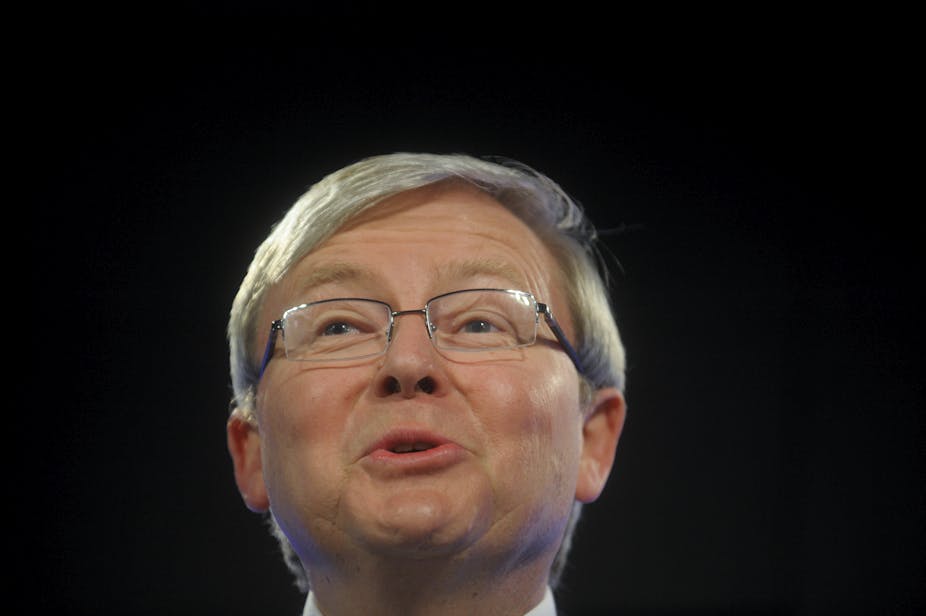The government has more than financed the $3.8 billion cost of moving early to an Emissions Trading Scheme, with savings including a crackdown on fringe benefits for cars, cuts to the number of senior public servants and economies in climate programs.
Announcing the one year bring forward to July 2014, Prime Minister Kevin Rudd said: “We’ve taken a decision to terminate the carbon tax”. He said it was an important day for Australia.
The government estimates average households next financial year, when the carbon tax moves to a floating price on emissions, will benefit by about $380 in a reduction to their cost of living.
The cuts, over four years, would yield $3.9 billion – $177 million more than needed to offset the cost to the budget.
The biggest saving is $1.8 billion from changes to the fringe benefit tax arrangements for employer-provided cars. This change will remove the statutory formula method for both salary sacrificed and employer-provided cars. But people who use their vehicles for work-related travel, will still be able to use a logbook to ensure their fringe benefit excludes any business use.
About 320 thousand people will be affected by the crackdown, but more than 3.6 million workers, including employees, self employed and sole traders claiming deductions for work related travel expenses when they use their own car will not hit.
The government says that recent advances in technology, such as car logbook apps, make this easier today than when the fringe benefit rules were originally introduced in 1986.
Ending the Energy Security Fund two years early will save $770 million, while an adjustment to the Coal Sector Jobs package allocation in 2014-15 will yield $186 million.
There will also be a deferral of $200 million in funding from the Carbon Capture and Storage program and the return of $24 million to the budget from this program.
Unallocated funding will be returned from the Biodiversity Fund, yielding $213 million, and $143 million of unallocated funding will come back from the Carbon Farming Futures program. Some $200 million from the Clean Technology Program will be rephased and $162 million of unallocated funding will be returned. The reforms to the public service management and more efficient procurement of agency software will save $248 million.
Treasurer Chris Bowen said there were 44,500 people in the senior ranks of the public service and these would be reduced by 800. The government’s preference was always to reduce numbers by attrition, he said.
Bringing forward the floating price by one year will mean a 75% reduction in the carbon liabilities of the 370 biggest polluters. But assistance to emissions intensive industry remains.
Under a floating scheme, the carbon price is expected to be around $6 a tonne – compared to the $25.40 a tonne that it was due to be next July under the carbon tax. Rudd said that from July 1 2014 Australia’s carbon tax would be the same as in 31 other nations covering more than 500 million people. He called on state governments to also act on power prices.
He said Treasury modelling calculated that moving to a floating price 12 months ahead of time would reduce cost of living by $7.20 a week for an average family, with the impact greatest on electricity and gas bills.
“This move is expected to save the average household around $3 a week, or over $150 in the year, on its electricity bills and around $1.10 per week, or $57 over the year, on its gas bills, providing much needed cost of living relief to many households,” Rudd said.
The household compensation already built into the system for carbon pricing will not alter.

